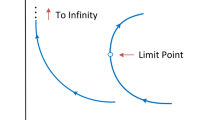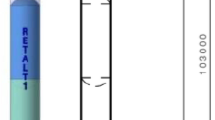Abstract
A novel guidance law that utilizes optimal control theory in combination with linear time-varying state-transition matrices to calculate the optimal path for a chaser spacecraft from its initial point to a desired final point and a desired amount of time is proposed in this paper. The optimal guidance law is formulated using more accurate second-order integral form of Gauss Variational Equations to map control accelerations to the dynamics in terms of relative orbital elements. When comparing the second-order form against the traditional Gauss Variational Equations, the guidance law results in a 15% reduction in control demand. In addition, this paper presents a new method that allows for the closed-loop testing of guidance, navigation and control systems with realistic software models of GPS receivers, RADAR systems for on-board relative navigation, and ground-station up-links of the target states. Specifically, utilizing the signal-to-noise ratio of various sensors, the errors that arise due to hardware noise and/or environmental factors can be modeled accurately based on the communication link. The guidance law is tested using the newly developed software-in-the-loop test-bed for a far-range formation flight scenario around the non-cooperative Alouette-2 spacecraft as well as on an arbitrary defined highly elliptical orbit.






































Similar content being viewed by others
Data Availability
Not applicable.
References
Beigelman, I., Gurfil, P.: Optimal fuel-balanced impulsive formationkeeping for perturbed spacecraft orbits. J. Guid. Control Dyn. 31(5), 1266–1283 (2008). https://doi.org/10.2514/1.34266
Biton, I., Koifman, M., Bar-Itzhack, I.Y.: Improved direct solution of the global positioning system equation. J. Guid. Control Dyn. 21(1), 45–49 (1998). https://doi.org/10.2514/2.4195
Chen, C.T.: Linear system theory and design. Oxford University Press, Oxford (1999)
Chihabi, Y., Ulrich, S.: Hybrid guardian map-based adaptive control of spacecraft formation flying on highly elliptical orbits in the restricted three-body problem. Acta Astronaut. 180, 370–385 (2021). https://doi.org/10.1016/j.actaastro.2020.12.048
Chihabi, Y., Ulrich, S.: Linear time-varying state transition matrix for spacecraft relative dynamics on highly elliptical orbits. Acta Astronaut. 198, 208–224 (2022). https://doi.org/10.1016/j.actaastro.2022.05.056
Chihabi, Y., Ulrich, S.: Analytical spacecraft formation dynamics in eccentric orbits with gravitational, drag and third body perturbations. In: 29th AAS/AIAA space flight mechanics meeting (Ka’anapali, HI, 13–17 January 2019)
Chihabi, Y., Ulrich, S.: Spacecraft formation guidance law using a state transition matrix with gravitational, drag and third-body perturbations. In: 30th AIAA/AAS space flight mechanics meeting (Orlando, FL, 6–10 January 2020)
Clohessy, W.H., Wiltshire, R.S.: Terminal guidance system for satellite rendezvous. J. Aerosp. Sci. 27(9), 653–658 (1960). https://doi.org/10.2514/8.8704
Curry, G.: Radar system performance modeling. Artech House Publishers, Norwood (2004)
Domingos, R.C., de Moraes, R.V., De Almeida Prado, A.F.B.: Third-body perturbation in the case of elliptic orbits for the disturbing bodies. Math. Probl. Eng. (2008). https://doi.org/10.1155/2008/763654
Dumitriu, D., Lima, P.U., Udrea, B.: Optimal trajectory planning of formation flying spacecraft. IFAC Proc. Vol. 38(1), 313–318 (2005). https://doi.org/10.3182/20050703-6-CZ-1902.02013
Eyer, J.: A dynamics and control algorithm for low earth orbit precision formation flying satellites. Ph.D. Thesis, University of Toronto (2009)
Eyer, J.K., Damaren, C., Zee, R.E., Cannon, E.: A formation flying control algorithm for the canx-4 &5 low earth orbit nanosatellite mission. Space Technol. 27(4), 147–158 (2007)
Giralo, V., D’Amico, S.: Development of the Stanford GNSS navigation testbed for distributed space systems. In: Institute of navigation. International technical meeting, pp. 837–856. Inst. of Navigation Reston, VA (2018)
Grasso, M., Renga, A., Fasano, G., Graziano, M., Grassi, M., Moccia, A.: Design of an end-to-end demonstration mission of a formation-flying synthetic aperture radar (ff-sar) based on microsatellites. Adv. Space Res. (2020). https://doi.org/10.1016/j.asr.2020.05.051
Guffanti, T., D’Amico, S., Lavagna, M.: Long-term analytical propagation of satellite relative motion in perturbed orbits. In: AAS spaceflight mechanics proceedings, vol. 160. (2017)
Gurfil, P., Kholshevnikov, K.V.: Manifolds and metrics in the relative spacecraft motion problem. J. Guid. Control Dyn. 29(4), 1004–1010 (2006). https://doi.org/10.2514/1.15531
Gurfil, P., Kholshevnikov, K.V.: Distances on the relative spacecraft motion manifold. In: AIAA guidance, navigation and control conference and exhibit (San Francisco, CA, 2005. AIAA paper 2005-5859)
Hamel, J.F., de Lafontaine, J.: Neighboring optimum feedback control law for earth-orbiting formation-flying spacecraft. J. Guid. Control Dyn. 32(1), 290–299 (2009). https://doi.org/10.2514/1.32778
Hamel, J.F., Lafontaine, J.D.: Linearized dynamics of formation flying spacecraft on a j2-perturbed elliptical orbit. J. Guid. Control Dyn. 30(6), 1649–1658 (2007)
Inalhan, G., Tillerson, M., How, J.: Relative dynamics and control of spacecraft formations in eccentric orbits. J. Guid. Control Dyn. 25(1), 48–59 (2002). https://doi.org/10.2514/2.4874
Koenig, A.W., Guffanti, T., D’Amico, S.: New state transition matrices for spacecraft relative motion in perturbed orbits. J. Guid. Control Dyn. 40(7), 1749–1768 (2017). https://doi.org/10.2514/1.G002409
Leitner, J., Bauer, F.H.: A hardware-in-the-loop testbed for spacecraft formation flying applications. Tech. rep, NASA, NASA Goddard Space Flight Center, Greenbelt, MD United States (2001)
Lewis, F.L., Xie, L., Popa, D.: Optimal and robust estimation: with an introduction to stochastic control theory, 2nd edn. CRC Press, Boca Raton (2008)
Montenbruck, O., Gill, E.: Satellite orbits: models, methods, and applications. Springer, Berlin (2001)
Park, H.E., Park, S.Y., Kim, S.W., Park, C.: Integrated orbit and attitude hardware-in-the-loop simulations for autonomous satellite formation flying. Adv. Space Res. 52(12), 2052–2066 (2013). https://doi.org/10.1016/j.asr.2013.09.015
Peng, Y., Scales, W.A., Edwards, T.R.: GPS-based satellite formation flight simulation and applications to ionospheric remote sensing. Navigation 67(1), 3–21 (2020)
Peters, T.V., Branco, J., Escorial, D., Castellani, L.T., Cropp, A.: Mission analysis for proba-3 nominal operations. Acta Astronaut. 102, 296–310 (2014). https://doi.org/10.1016/j.actaastro.2014.01.010
Petit, G., Luzum, B.: Iers conventions. Tech. rep., Frankfurt am Main: Verlag des Bundesamts für Kartographie und Geodäsie (2010)
Prado, A.F.B.A.: Third-body perturbation in orbits around natural satellites. J. Guid. Control Dyn. 26(1), 33–40 (2003). https://doi.org/10.1155/2008/763654
Roth, N.H.: Navigation and control design for the canx-4/-5 satellite formation flying mission. Master’s Thesis, University of Toronto Institute for Aerospace Studies (2010)
Schaub, H., Junkins, J.L.: Analytical mechanics of space systems, pp. 593–673. AIAA American Institute of Aeronautics & Astronautics, Reston (2018)
Tooley, C.R., Black, R.K., Robertson, B.P., Stone, J.M., Pope, S.E., Davis, G.T.: The magnetospheric multiscale constellation. Space Sci. Rev. 199(1), 23–76 (2016). https://doi.org/10.1007/s11214-015-0220-5
Vallado, D.A.: Fundamentals of astrodynamics and applications, 2nd edn., pp. 80–81. Microcosm Press, El Segundo (2001)
Wieser, A., Brunner, F.: An extended weight model for GPS phase observations. Earth Planet. Sci. Lett. (2000). https://doi.org/10.1186/BF03352281
Zhang, G., Mortari, D.: Second-order integral-form gauss’s variational equations under impulsive control. J. Guid. Control Dyn. 42(2), 284–302 (2019). https://doi.org/10.2514/1.G003607
Author information
Authors and Affiliations
Corresponding author
Ethics declarations
Conflict of interest
The authors declare that they have no known competing financial interests or personal relationships that could have appeared to influence the work reported in this paper.
Additional information
Publisher's Note
Springer Nature remains neutral with regard to jurisdictional claims in published maps and institutional affiliations.
Appendix
Appendix
Rights and permissions
Springer Nature or its licensor (e.g. a society or other partner) holds exclusive rights to this article under a publishing agreement with the author(s) or other rightsholder(s); author self-archiving of the accepted manuscript version of this article is solely governed by the terms of such publishing agreement and applicable law.
About this article
Cite this article
Chihabi, Y., Ulrich, S. Software-in-the-Loop Validation of a Novel Two-Point Optimal Guidance for Perturbed Spacecraft Rendezvous and Formations. J Astronaut Sci 70, 43 (2023). https://doi.org/10.1007/s40295-023-00405-8
Accepted:
Published:
DOI: https://doi.org/10.1007/s40295-023-00405-8




